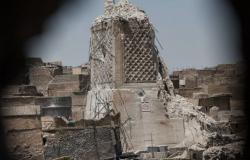Six candidates, most of them conservative, have been authorized to compete in the Iranian presidential election on June 28, intended to replace Ebrahim Raïssi, who died in a helicopter accident on May 20, the interior ministry announced on Sunday.
These candidates were selected by the Council of Guardians of the Constitution, an unelected body dominated by conservatives and charged with overseeing the electoral process. These candidates were selected from among eighty personalities who submitted their applications.
Among those who will be able to campaign are the conservative speaker of Parliament, Mohammad Bagher Ghalibaf; the mayor of Tehran, Alireza Zakani, and Saïd Jalili, the former ultraconservative nuclear negotiator.
Read also | Article reserved for our subscribers “The death of President Raïssi has a small impact on the functioning of the Iranian political system”
Add to your selections
Other candidates were selected: Amir-Hossein Ghazizadeh Hashemi, the ultraconservative leader of the Martyrs’ Foundation, Mostafa Pourmohammadi, former interior minister, and Masoud Pezeshkian, deputy for the city of Tabriz (Northwest), former Minister of Health and the only reformer in the running.
On the other hand, the Council disqualified the populist Mahmoud Ahmadinejad, who wanted to run, at 67, for the post of president which he held from 2005 to 2013. He had already been excluded during the presidential elections of 2021 and 2017. Another Veteran of the Islamic Republic, Ali Larijani, a former speaker of Parliament considered a moderate, was also rejected. The Guardian Council has not publicly justified its choices.
During the 2021 election, this same council only retained seven candidates out of the 592 applicants, invalidating many reformist and moderate personalities. Which opened the way for Ebrahim Raïssi, the candidate from the conservative and ultraconservative camp, easily elected in the first round. Only 49% of Iranian voters participated in this election, the lowest rate for a presidential election since the Islamic Revolution of 1979.
Read also | Article reserved for our subscribers Death of Iranian President Ebrahim Raïssi: the Tehran regime faces a double challenge
Add to your selections
Four women had submitted a candidacy file this year but none of them was qualified, as is the case for all presidential elections since the beginning of the Islamic Republic.
Unlike most countries, the president is not the head of state – this role falls to the Supreme Leader, currently Ayatollah Ali Khamenei, aged 85 and in office for thirty-five years. Elected for four years, the president nevertheless has an important role in directing the government and its policies, the post of prime minister not existing.
An election closely scrutinized
Scheduled for spring 2025, the presidential election was made necessary by the death at age 63 of Ebrahim Raïssi in a helicopter accident in the northwest of the country on May 19, in the company of seven other people including the head of the diplomacy, Hossein Amir-Abdollahian.
The World Application
The Morning of the World
Every morning, find our selection of 20 articles not to be missed
Download the app
Appointed urgently, the interim president, Mohammad Mokhber, 68, was responsible for supervising the proper organization of the vote. This election will be closely scrutinized on the international scene while Tehran is a major player in the Middle East, against a backdrop of war in Gaza and concerns over the Iranian nuclear program.







